Flesh and Blood is a fight. To its very core, the game is one where we engage in brutal combat, risking the life and limb of each hero we play, threatening the life force of every hero who dares stand across the table. It is a sweet science of value: one where plays are no mere 1-for-1 or 2-for-1, but each interaction carries both an explicit and an implicit value gained or lost. These numerical exchanges are the heart that makes the game tick; this core of brutal mathematics of combat gets blood pumping through the veins of every interaction.
Articles have been authored in moons past about the value in cards; the value in attacks and blocks. Further articles have addressed the core competencies and deficiencies of the heroes we know and love. But for each and every hero, there is another modular mathematics that we must not ignore.
All the way from the very beginning, reactions have been a secret sauce that makes the game tick like a piece of low explosive. All it takes is a light impact from a Lunging Press, or a dramatic Pummel, and the game just lights up, changing the raw math interactions into the dance of improvisation and optimization, known and unknown combined in a samba that sizzles over from one table to the next.
You probably wouldn't want there to be no variance in FAB, for it to be a game where the better player wins 100% of the time. The better player should win most of the time for sure, but a little variance allows for players of similar skill levels to experience the thrills that the game has to offer. This amps up the interaction, and works to eliminate the idea that any given hero or build is the absolute best- sprinkling in a little surprise can get you further than just being entirely consistent. The threat of reactions, their presence in the game and, more specifically, their potential presence in your deck, adds an element of variance to every attack, in a way that makes the game more exciting.
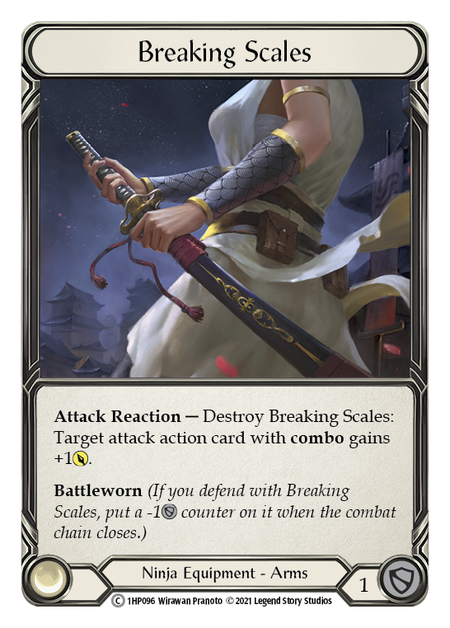
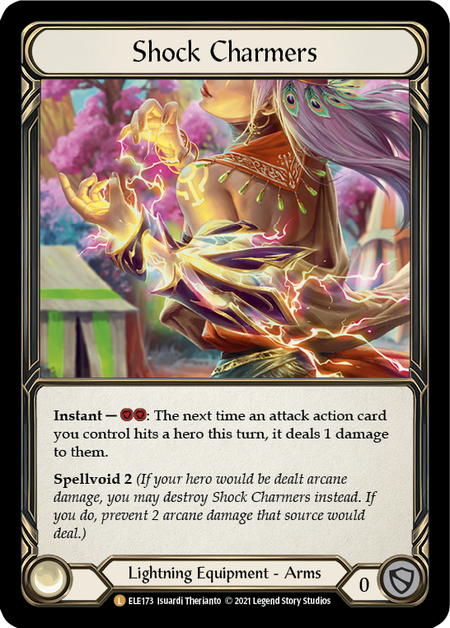
Some heroes come with on-board reactions, like Katsu and his pesky Breaking Scales, or even Lexi with the under-utilized Shock Charmers. The threat of Breaking Scales can force the opponent to play differently all the way from the very first attack action card played. It's not the reaction alone, of course; it's how the reaction interacts with Katsu's core ability that really brings the spice. If Katsu can edge over that one damage, his turn can change dramatically. In fact, it's so transformative for some Katsu turns that I (as a Guardian) overblock on practically every attack just to deny the triggers. (Frequently, on the one turn that I don't overblock, it's the perfect turn for Katsu to break the scales, get over, and have an extremely long chain that turns the game back in his favor.)
Other heroes just play in-deck reactions so consistently that they are worthy of playing around in the same way, too. Bravo frequently plays 2 to 6 Pummels, depending on the season: at minimum, the two red, and all the way up to the full suite of 3 red and 3 blues. Having that many Pummels in the deck offers a similar level of consistency as starting with them in play, as any opponent can attest to: sometimes it just feels like Bravo "always has it."

It is this that changes the game from that of raw math into one of beauty and skill. If it was always the case that Bravo "has the Pummel," if it was always the case that Katsu will have the Scales… that beauty would be gone. They can't always have it, they have to spend their finitude eventually– is it now? Or the next time? Maybe never! There is so much to be said about not knowing, about the struggle of finding out; beauty that spindles out from the unknown and makes our neurons alight, fleet of foot in realms of possibility. The fear, the flutter, the feel of it all - that is what makes the sweet science. If I dodge, do you come with me or will you be left behind? If I press, will you move aside like water or be crushed beneath my wave?
There is a particular timing to these things of course: the earlier in the game it is, the less likely it is for the opponent to "have it", or even get good benefit from using it. The later in the game it is, the more likely that your opponent has at least seen the reaction.
Using this, we can say that it might be better to try and "make them have it" the earlier in the game that it is. Take, for example, the perennial classic Command and Conquer + Pummel. If C&C connects with you, you'll lose your arsenal - and if it was Pummeled, that can cost you another card from hand. Command and Conquer plus Pummel is definitely devastating - it very usually swings games. Generally speaking, the better that you can play around it, the better player you will be. Sometimes, however infrequently, it can be the right move to just take the 10 and lose a card in hand and arsenal, rather than only taking 4 but losing a total of 3 cards from hand and 1 more from arsenal. Always have this consideration in mind! Sometimes, however infrequently, taking the 3-card hand is the right play.
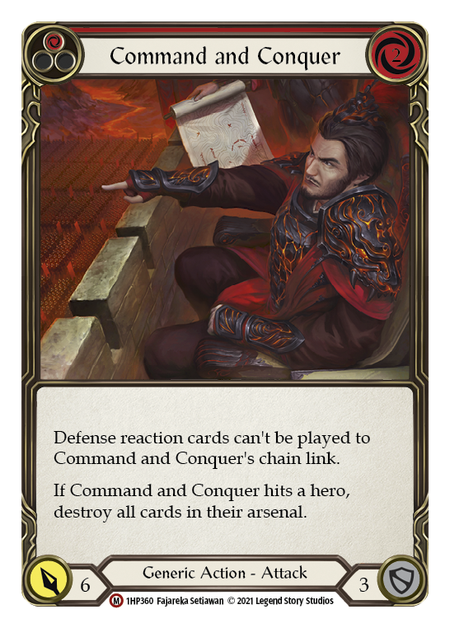

From a risk assessment stance, the earlier in the game, the more readily I might block with only six: the chances of them having the C&C and the Pummel together in the first two or three turns is statistically low. Of course, it can line up, but you will usually be better off "making them have" the Pummel, instead of just overblocking out of an abundance of caution.
Plus, the later in the game it is, the more of their deck you have seen. There are opportunities to hide this info, like with Enlightened Strike, Sink Below, or Crown of Providence: these are not to be overlooked, you never do quite know what your opponent is hiding from you. Sometimes they will hide reactions of their own, like putting a Lightning Press away for another turn– an overall good move, since the card itself doesn't block. Either way, as the game progresses, you should have a decent idea of what all tricks are still just around the bend for you– if any at all!
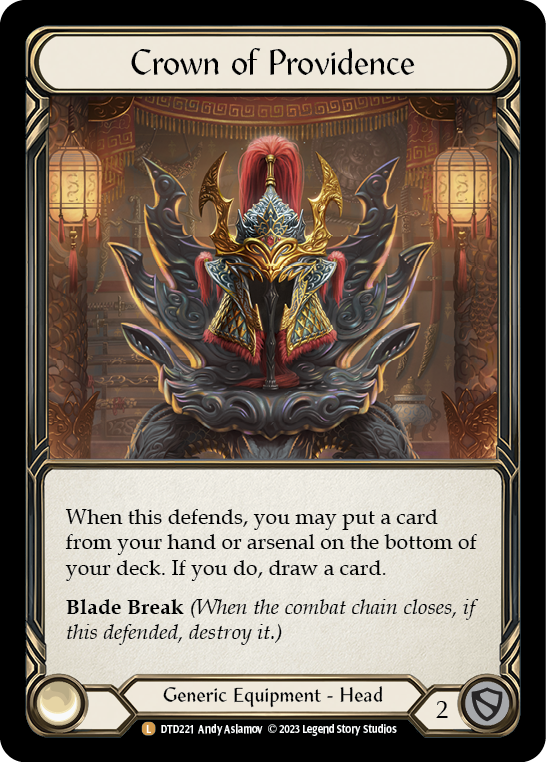

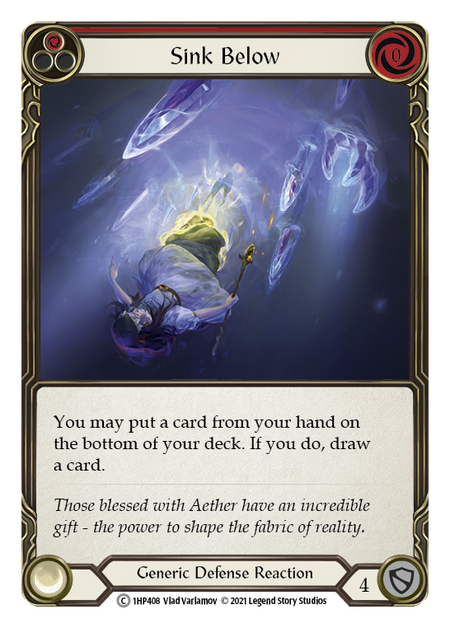
Once a move becomes recognized as powerful, it becomes part of your core. Do you always play around the Pummel, or do you make them have it? Early on they might not have it, later they'll be pitch-stacked, and later still they will be out of copies... so, make them have it early, and track if they have it the later it gets. you will see these cards get pitched and put away for the future... or you might be able to suss out the particular scent of an arsenaled Pummel.
Let us also consider the Breaking Scales! Katsu only has one set (Silverwind Shuriken notwithstanding) of those – and they can enable some of his most devastating turns. If we can get him to use those early, then he won't have them for the late game. But sometimes they are just so good that you should expect and respect them, like Pummel.
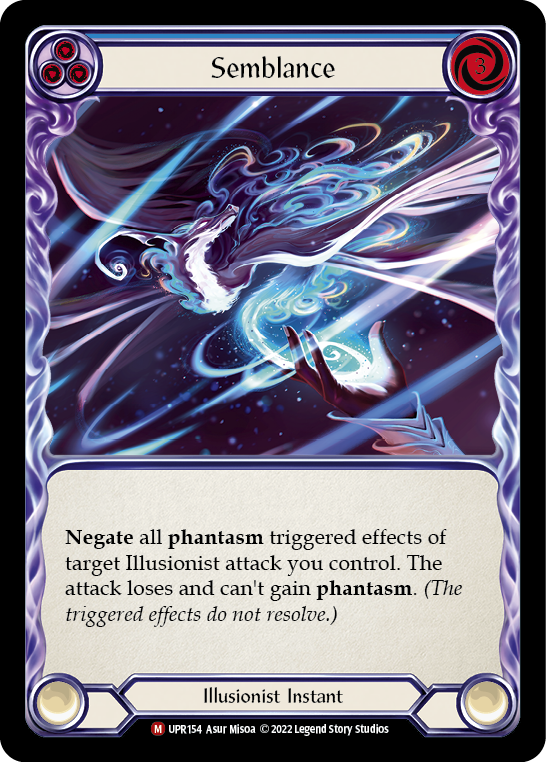
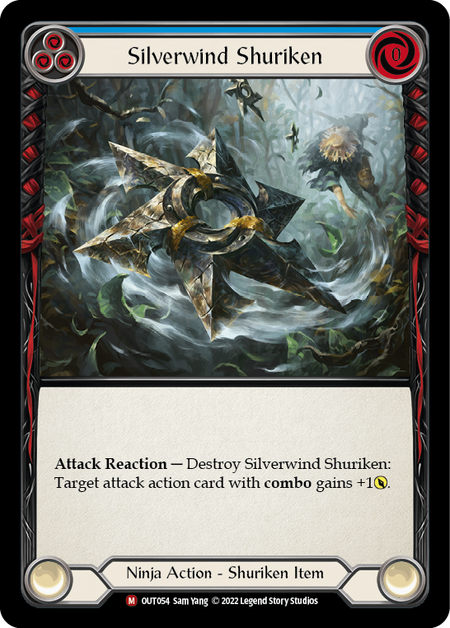
Some cards actually impact the game without ever activating, by way of an effect like Semblance (not actually a reaction card, but its impact is akin to one in many ways). If you pitch an early Semblance, I know that I will have to start playing and planning around it in the late game. I know that it can allow you to keep your Ghostly Touch and punish me heavily for punishing you throughout the game, so play around it I will. I'll spend extra time and mental gas pitch stacking, just so that I can have poppers available, some way of baiting out your Semblance so that I don't lose to it.
We can offensively play around them too! One move that I have started subscribing to - something that I see on other Bravo lists - is the use of Lunging Press. Oftentimes, my opponent will assume that the only attack reactions that I even have room for are Pummels. And this is frequently true: it's not necessarily a bad assumption. However, since it is a common assumption, I can absolutely abuse it. With this assumption comes the 'perfect block' strategy: my opponents will block 8 of 11 damage to stop the effect of Crippling Crush; 6 of 6 on Command and Conquer (especially if I actively appear as though I cannot Pummel with only 1 card in hand and no pitch available). Now, Lunging Press is extremely valuable: it turns Crippling Crush on, and it triggers C&C when my opponent least expects it. At one ProQuest event, I swung C&C at my opponent with two cards available to me - one, another C&C, and the other a Lunging Press. They overblocked for 10, as their arsenal was extremely valuable to them and they were willing to hedge against the Pummel to save their arsenal. With that knowledge of how they valued their arsenal, I came at them the following turn with a C&C with no resources floating, but my Lunging Press from before in my arsenal. They blocked exactly six, I Lunged over by 1, and now I'd ruined their plans twice over.
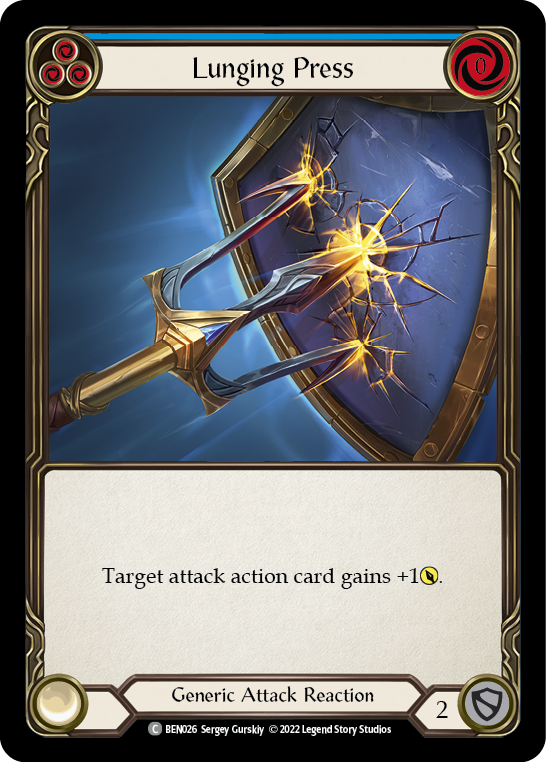
As Guardians, we actually have yet another juke available to us in the form of the keyword heave. When you've got a heave card in hand, you can psych the opponent into believing you've got a Pummel coming from your 2-card hand, while still maintaining a use for those bluffing cards. Played correctly, each instance of heave can be a "ghost Pummel," a whiff of something that the opponent will perhaps mistake for an early Pummel, and maybe play around incorrectly. It bears the same menacing aura: attacking with two cards left in hand almost always smells of the Pummel. If you often threaten with two cards in hand, a significant juke that you can establish is just heave-ing instead. They block, wince for a Pummel, and you just… make 3 Seismics.

Then, the opponent is in a tight spot indeed. Even if they pressure you down to just one blue card left, you can still possibly crack back with an 8, 9, or 10 attack by way of Thunder Quake. If you have some room to play with in the form of additional cards, you could even draw into a go again attack that ends on the heaved card, or flexes into another expensive drawn card like Crippling Crush or Star Struck. It can often be good to play the Thunder Quake out of arsenal, but if you draw into the option to send a dominated Crippling Crush instead, that may well just be the play - which can steamroll you in to another unfettered turn.
Reactions open up so much of the game. A little sprinkle of unpredictability is so influential in play patterns - it takes the game away from a prospect of, "I attack for X, can you block for X or do you want to choose to take some of it?" and forces it back in to a realm of fun and enjoyment.
The information in FAB is often trackable, but never fully predictable, because of the nature of reactions. Do my attack reacts line up with their defense reacts? Do we fall out of sync in a way that favors me, you, or neither?
Each battle can wear a groove in the mind, a channel of process that is delightfully disturbed by these idiosyncrasies. If each game and each matchup played out the same exact way every single time, or even a similar way within a small gap of variance, the game itself would wear to be boring, drilling a hole in the head of its players. Instead, these channels are disturbed by variations like the chamber of a music box, each bit striking a fresh note in the machinations, each disturbance a brilliant and ringing thing that echoes in to discussions shortly thereafter, into new lines and movements, into new phrases to be coded in to future games.




